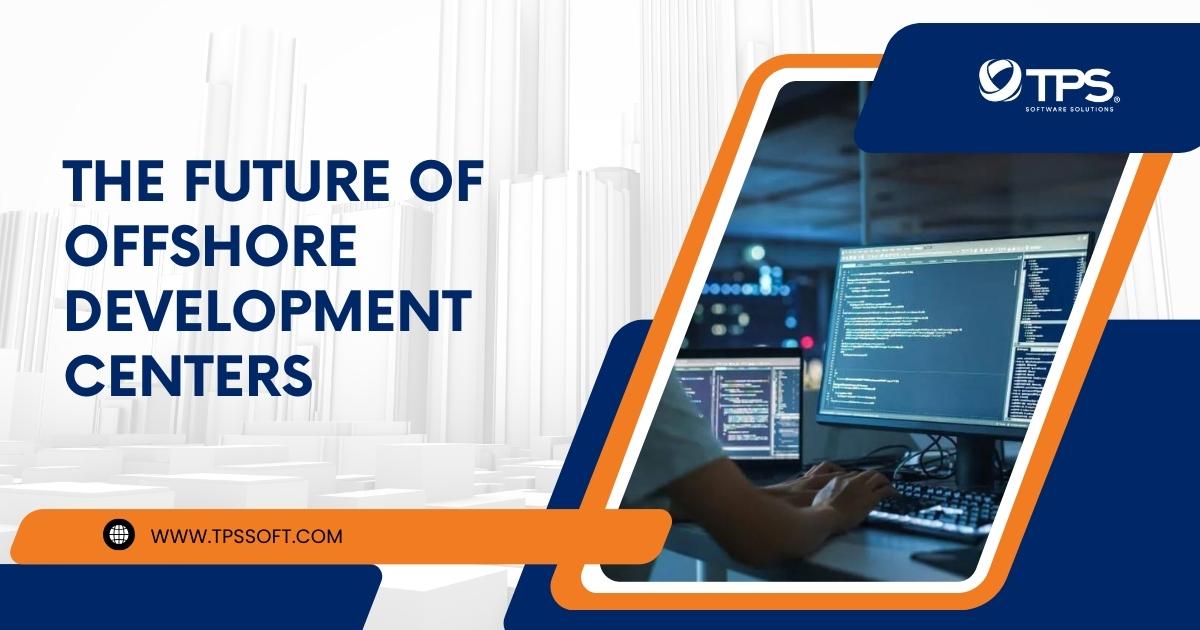Introduction
Offshore Development Centers (ODCs) have become integral to the software development landscape. These centers, which are typically established in countries with cost-effective labor markets, play a pivotal role in helping businesses develop and maintain software solutions, all while reducing operational costs. As we venture further into the 21st century, the future of offshore development centers promises to be more dynamic and promising than ever before. In this article, we delve into the evolution of ODCs, provide insightful statistics and research findings, and offer guidance on how to choose a top-notch offshore development center.

The Evolution of Offshore Development Centers
Past Trends
Historically, offshore development centers were primarily used as a means to cut costs while maintaining quality software development. Countries like India, China, and the Philippines were the go-to destinations for companies looking to outsource software development. This trend was fueled by significant cost savings, often exceeding 30%, as well as access to a vast talent pool.
Current Landscape
Nowadays, offshore development centers (ODCs) have evolved significantly from their historical role of primarily reducing operational costs. They have transitioned into multifaceted entities offering a broader array of advantages. One of the most notable shifts has been from cost-centric outsourcing to a more holistic approach. ODCs now provide access to a global talent pool, allowing businesses to tap into specialized and diverse skill sets from around the world. This not only enhances the quality of software development but also fosters innovation and creativity within development teams.
Moreover, ODCs have become agile and scalable, proficiently adopting agile methodologies to meet the ever-changing demands of projects. This flexibility enables companies to expand or downsize their development teams as needed, a crucial attribute in today’s rapidly evolving tech landscape.
Additionally, it is increasingly embracing emerging technologies such as artificial intelligence (AI), blockchain, and the Internet of Things (IoT). This adaptability positions businesses to stay competitive and relevant in the constantly evolving tech industry.
Furthermore, in an era marked by heightened concerns about data security and privacy, ODCs have prioritized the implementation of robust data security and compliance measures. These measures ensure that they adhere to global standards such as GDPR and HIPAA, assuaging concerns about data breaches and regulatory violations.
Statistical Insights into Offshore Development Centers
In the realm of offshore development centers (ODCs), key statistical insights illuminate the current state and future prospects of this integral component of the software development landscape.
Market Growth and Client Satisfaction
Firstly, it’s noteworthy that the global IT outsourcing market is on a trajectory of substantial growth. Projections from Statista anticipate the market size to reach a staggering $777.7 billion by 2028, exhibiting a robust compound annual growth rate (CAGR) of 11.07%. This robust growth signifies sustained and burgeoning demand for offshore development services.
Moreover, client satisfaction and quality in ODC operations have been extensively documented. A survey conducted by Deloitte reveals that a significant 59% of organizations outsourcing their IT functions reported that the quality exceeded their expectations. This high level of satisfaction is a testament to the evolving competency and maturity of offshore development centers.
Diversification of Offshore Development Destinations
Geographically, while established destinations like India and the Philippines continue to play pivotal roles in offshore development, Eastern European countries, such as Ukraine and Poland, are gaining prominence due to their highly skilled talent pools and favorable proximity to Western Europe. This geographic diversification underscores the growing global reach of ODCs.
In addition, emerging markets are making strides in becoming attractive offshore destinations. Vietnam and Mexico, for instance, are gaining recognition for their competitive costs and a steadily growing pool of IT professionals. These emerging markets further diversify the options available to organizations seeking offshore development services.
Collectively, these statistical insights provide a snapshot of the current state and promising future of offshore development centers. The market’s remarkable growth, coupled with high levels of client satisfaction, geographic diversification, and the emergence of new offshore destinations, highlights the enduring relevance and significance of ODCs in the evolving landscape of software development.

Choosing a Good Offshore Development Center
Selecting the right offshore development center (ODC) is a critical step toward ensuring the success of your project. Several key factors should guide your decision-making process.
Expertise
Begin by assessing the ODC’s expertise in your specific domain or technology stack. Look for a proven track record of successfully executed projects within your industry. The more aligned the ODC’s expertise is with your project’s requirements, the smoother the collaboration will be.
Communication
Effective communication is the cornerstone of successful remote collaboration. Ensure that the ODC has a strong English-speaking team and understands your preferred communication channels and tools. Clear and open communication is essential for efficient project management.
Quality Assurance
Inquire about the ODC’s quality control processes, including testing and debugging procedures. A robust commitment to quality assurance ensures that the final product meets your standards and expectations.
Security Measures
Data security is paramount in today’s digital landscape. Evaluate the ODC’s data security and compliance practices to safeguard your sensitive information and protect your intellectual property. Ensure that the ODC adheres to global standards and regulations.
Scalability
Projects can evolve, and requirements may change. It’s crucial that the ODC can scale its team and resources according to your project’s evolving needs. Flexibility in team size and resource allocation can save time and resources in the long run.
Cultural Compatibility
Consider the cultural compatibility and time zone differences between your organization and the ODC. Differences in culture and time zones can impact collaboration and project management. Choose an ODC that can seamlessly integrate with your work culture.
Client References
Sources like GoodFirms and Clutch are reputable platforms that offer trustworthy and insightful reviews from past clients. These platforms provide valuable insights into the performance, reliability, and overall satisfaction of offshore development centers (ODCs) by showcasing real experiences from previous clients. Reading these reviews can be a valuable step in your decision-making process when selecting an ODC for your project. In addition, checking the company’s portfolio or case studies on its website is also a good method.
Conclusion
Offshore development centers are poised for a bright future as technology continues to advance and businesses seek cost-effective solutions with access to global talent. By staying informed about industry trends, understanding key statistics, and following best practices for choosing an ODC, organizations can leverage these centers to drive innovation and remain competitive in the ever-evolving tech landscape. As the demand for software development services continues to rise, offshore development centers are set to play an even more significant role in shaping the future of the industry.














